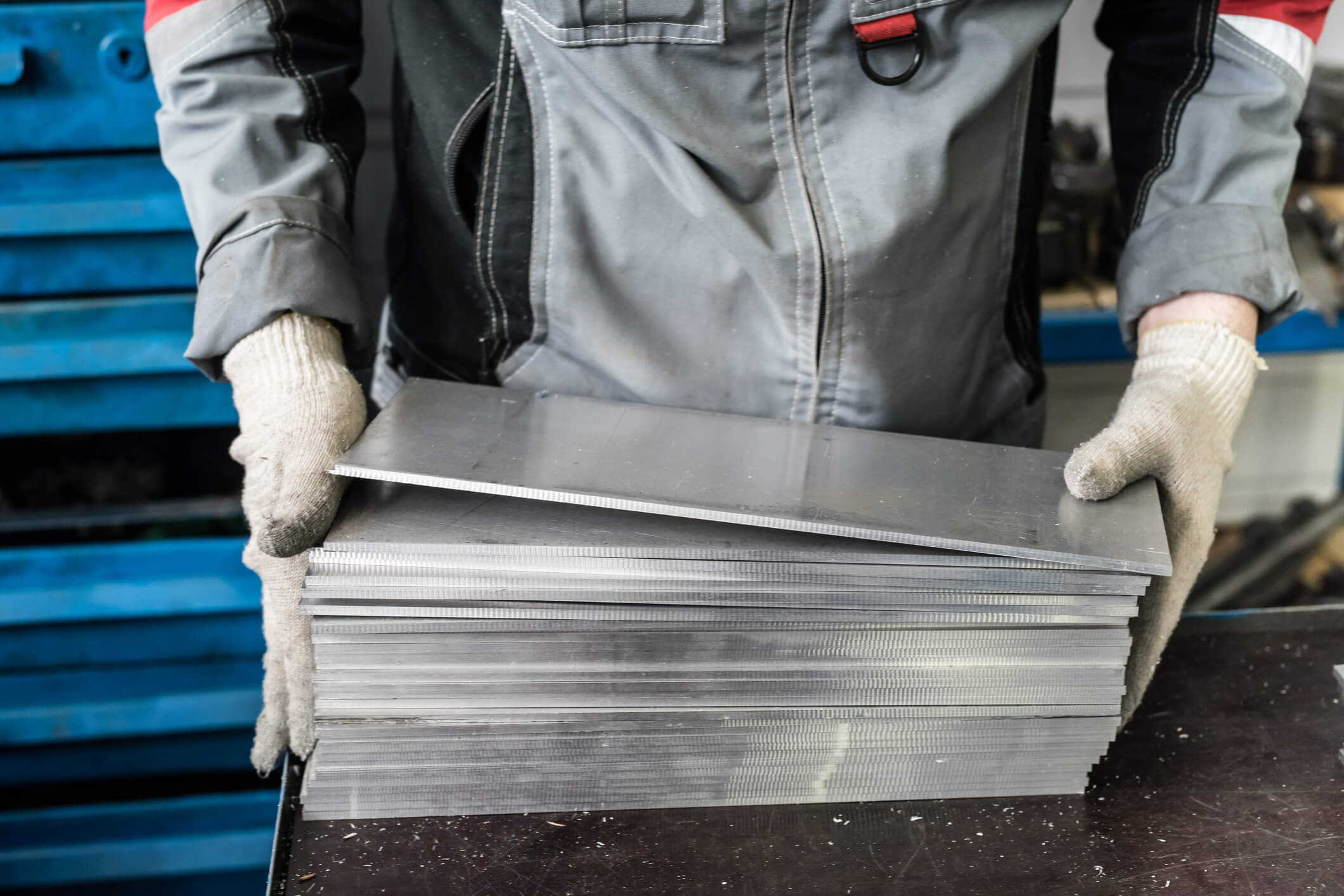
3 Common Stainless Steel Finishing Options for Architectural Projects
There are a number of common stainless steel finishing options that alter more than just the decorative appearance of the material. Some of these finishes originate from the mill, but many are applied later during processing; for example polished, brushed, blasted, etched and colored finishes.
The Selection of Finishing for Stainless Steel Depends of Its Intended Use
The selection of surface finish can have implications on friction, wear, maintenance and corrosion resistance. A rough surface finish can effectively lower the corrosion resistance to that of a lower grade of stainless steel. Rougher surfaces accumulate more dust, debris and corrosive substances from the environment, such as industrial pollutants and coastal and de-icing salts. Their higher surface tension means that they also retain the moisture that is needed for corrosion to occur for longer periods of time.
For projects where the appearance of stainless steel is a design element, the selection of finish can alter the aesthetics of the end-product. The choice of surface finish is also important where fabrication processes will be applied. For example, rough surface finishes are appropriate when the steel will be ground prior to painting.
Whatever the intended use, choosing and clearly specifying the stainless steel finish option as defined by standard industry designations is essential.
The Development of the Surface Finish Standard
The ASTM International Standards have attempted to define the most common stainless steel surface finishes. There are eight basic stainless steel mill finishes used in the industry by product designers and architects.
Finishes No. 1 and 2 originate at the mill, while 3 to 8 are produced mechanically using finer and finer abrasives. During the mid-1980’s dull polished finishes became widely used on projects such as high-profile architectural projects. However, it was soon discovered that some of these dull polished finishes had poor corrosion resistance, especially when exposed to seawater. Consequently, a new surface finish description was introduced which remains in use to this day.
The three most common stainless steel finishing options are:
- No. 2B – Matte finish
- No. 4 – Brushed finish
- No. 8 – Mirror finish
No. 2B – Matte Finish
This is the most widely used surface finish in use today and forms the basis for most polished and brushed finishes. No. 2B is the mill finish, meaning it has not been processed further.
Matte finishes are dull and resemble a cloudy mirror – not ideal for atheistic end uses. However, they’re a good choice where appearance is not important or when further finishing is intended. No. 2B Matte finishes are the least expensive of the stainless steel finishing options.
Steel is first rolled to size and thickness and then annealed to change the properties. Any oxidation (mill scale) that forms on the surface is removed by pickling, and a passivation layer is created on the surface. The No. 2B finish is produced by cold rolling the coil of stainless steel through special highly polished rolls after annealing and pickling. The cold rolling produces a smooth, but smoky surface with low reflectivity.
This finish is not often used for architectural applications, except as flashings. The No 2B finish is readily polished to high luster by secondary finishing processes.
Applications include:
- Bakeware
- Flatware
- Architectural Flashing
- Refrigeration Equipment
- Plumbing Fixtures
No. 4 Brushed Finish
The No. 4 finish is a common architectural surface because of the more lustrous appearance obtained by the finer grain. The Gateway Arch in St Louis, Missouri is the world’s tallest arch and is faced in 886 tons of ¼ inch type 304 brushed stainless steel. Because of its resistance to corrosion and weathering, the luster of the arch will last for many decades.

Brushed stainless steel, as its name implies, is a mechanical surface finish applied to sheets from the mill by a secondary processor. A metal fabricator will start with a No. 2B mill finish and then brush and sand the stainless steel in one direction, using successively finer abrasives between 180 and 240 grit. This achieves a fine satin non-reflective finish.
Care must be taken to prevent scratches – if this finish is to be the final architectural surface – by protecting the surface with paper or plastic coating soon after the final pass through the rolls.
The No. 4 Brushed finish can vary with different suppliers and even from batch to batch from the same supplier. The variations arise from differing manufacturing conditions, such as wearing of the abrasive belts used in these finishes, type of buffing equipment used, size of the buff wheels, the type of abrasive composition used, and operator`s technique.
Some level of variation should be expected when ordering No. 4 Brushed finish. It can be helpful to request a sample from the fabricator to ensure the finish achieves the desired effect.
Brushing the stainless steel produces a distinctive look with a muted luster and a pattern of fine parallel lines. It has strong decorative appeal without being too reflective, as too much reflectiveness can be undesirable. For example, overly reflective stainless steel accents on a building could be blinding in bright sunlight. The drawbacks to this finish can include reduced corrosion resistance, as the grooves of the finish can be susceptible to rust.
This general-purpose finish is widely used for restaurant and kitchen equipment, storefronts, and food processing and dairy equipment. It is also used for automobile finishes, most famously by the DeLorean sports car featured in the Back to the Future films, paneled in polished stainless steel.
Applications include:
- Hospital Surfaces
- Appliances
- Kitchen Equipment
- Dairy Equipment
- Sinks
- Architectural Wall Panels
No. 8 – Mirror Finish
No 8. is the most reflective polished finish that is covered by the International Standards. Mirror finishes are highly reflective and created by polishing the stainless steel. The polishing process enhances appearance and consistency, making cleaning easier. It also masks the after-effects of welding and hides surface damage.
No. 8 Mirror finish is described as bright or mirror polished. It is created by polishing with successively finer grits followed by buffing with very fine polishing compounds to create a mirror-like, highly reflective finish.
Care should be taken when using glossy surface finishes to ensure that they do not unwittingly create glare or heat reflectivity issues. For example, building fronts facing the sun and concave-shaped areas deserve special attention during the planning phase to ensure motorists are not unintentionally blinded by the midday sun.
A benefit of No. 8 Mirror finishing is that it improves corrosion resistance. The polishing eradicates crevices where corrosive particles can lodge themselves. No 8 finishes are generally used on consumer products, although on some architectural sections they are produced for contrasting patterns. “The Bean”, a sculpture by artist Sir Anish Kapoor, in Chicago’s Millennium Park is made up of 168 highly polished #8 stainless steel plates that reflect and distort the city’s skyline.
Applications include:
- Mirrors
- Ornamental Trim
- Column Covers
- Wall Panels
- Reflectors
- Signage
Making Your Project A Success
Stainless steel is one of the strongest metals, and is produced in virtually all forms and sizes. Because of its appearance, strength, and high corrosion resistance, stainless steel is widely used in architecture for both exterior and interior applications. For cleaning, generally all that is needed is a washing with detergent and water or to be left to the action of the wind and rain, making stainless one of the most economical of architectural metals.





